This is a relatively new addition to my collection of recipes, after having looked through an old community cookbook given to me by a neighbour. It is based on a near-identical recipe obviously (and expressly) intended to use up leftovers from a roast pork Sunday dinner; however, after trying the original recipe, which called for the use of brown sugar and apple slices, I decided to omit the sugar, which made the dish too sweet, and the apples, which didn’t suit us, and replaced them with cooked carrots.
This cooking session occurred in early April, 2023; for a variety of reasons, including the sheer number of photos to organize and prepare for this post — I went into overdrive! — it has taken a bit more than three weeks for me to build this blog post. Also, for the sake of the narrative, the photo progression presented here occasionally differs from the precise progression of when the photos were taken, either because of some mise-en-place activities, actual progression of the food preparation, photo shooting (and occasionally its impact on progression), several operations occurring concurrently, and the like.
Preparing the dish:
Firstly, a countertop convection oven was turned on:
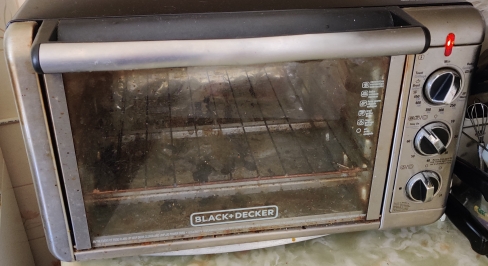
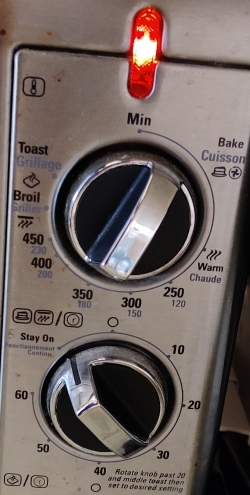
A roasting tray was taken out:
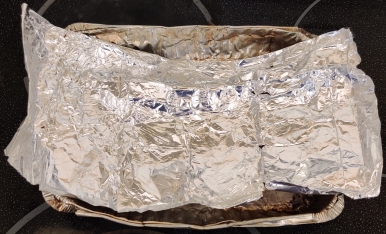
A package of (frozen) pork loin, defrosted prior to the cooking session, was taken out:
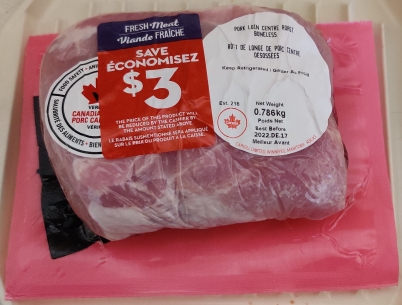
Scissors were taken out to open the vacuum pack sealing the pork:

The pork loin’s vacuum pack was cut open:
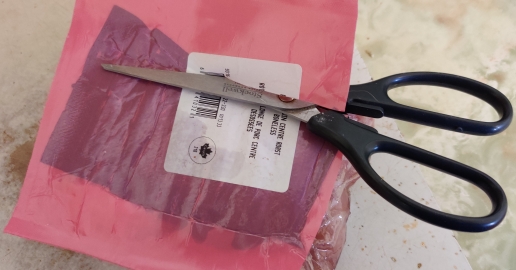
The pork loin, removed from the vacuum pack, was placed in the roasting tray:
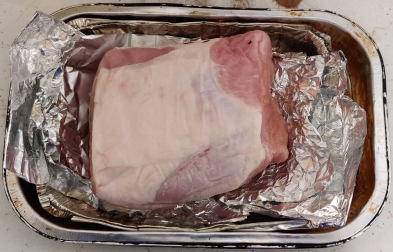
Garlic salt was taken out:
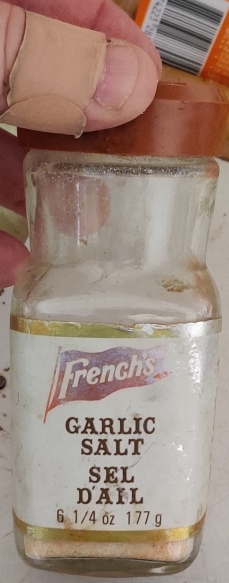
Garlic salt was liberally shaken on top of the pork loin:
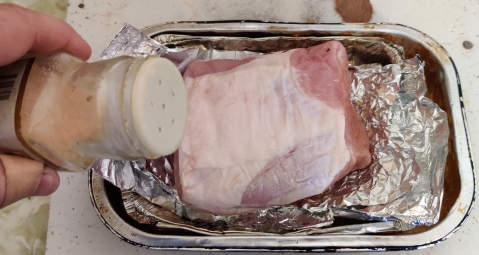
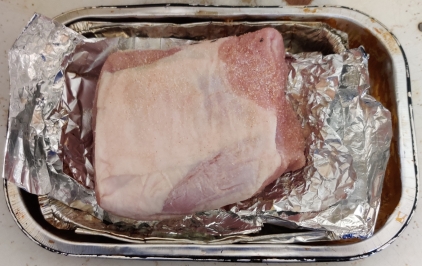
The pork loin was placed in the countertop convection oven:
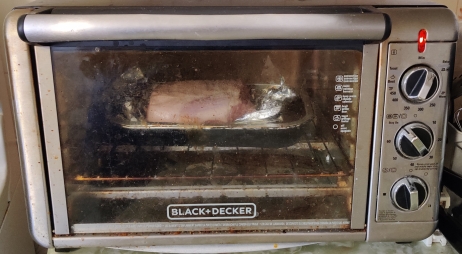
A timer was set for an hour as a reminder for how long to cook the pork loin:
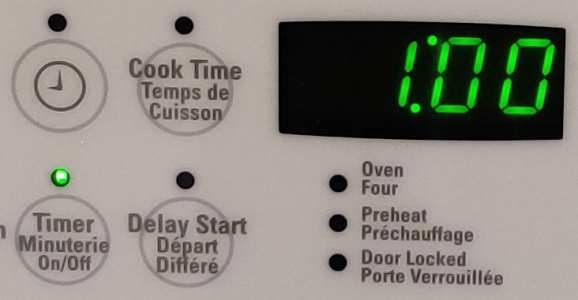
A pot was taken out for boiling carrots:
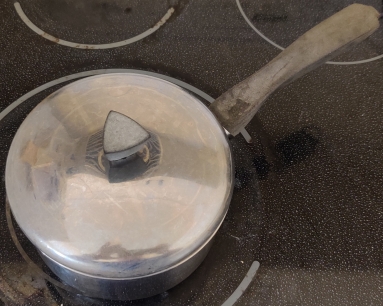
A scale was taken out to know roughly measure out the right amount of carrot:
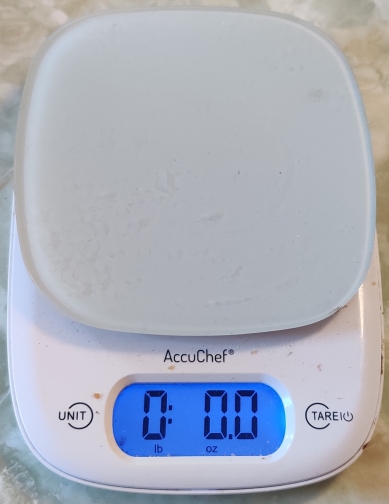
Carrots were taken out:
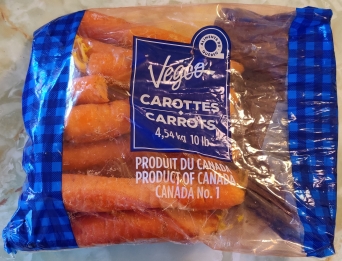
About a quarter pound of carrot — in this case, a single carrot — was taken out of the bag:
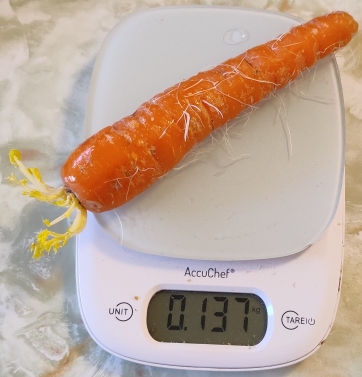
The carrot was cleaned and rinsed:
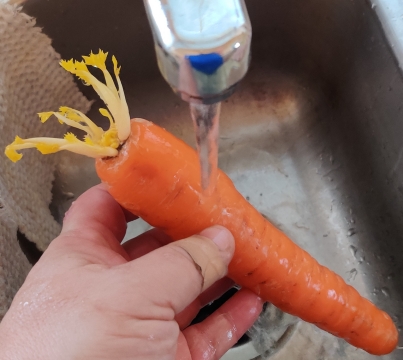
The cleaned carrot was placed on a cutting board:

The carrot was trimmed:
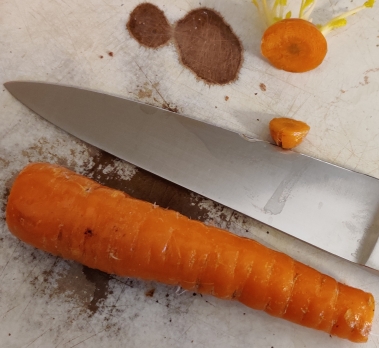
The carrot was sliced lengthwise:
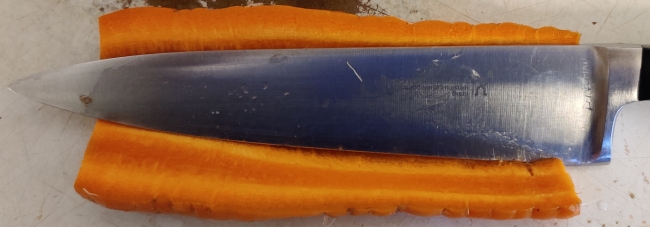
… and again sliced a few more times to make carrot spears:
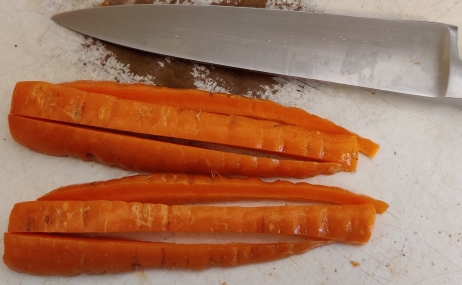
The carrot spears were chopped:
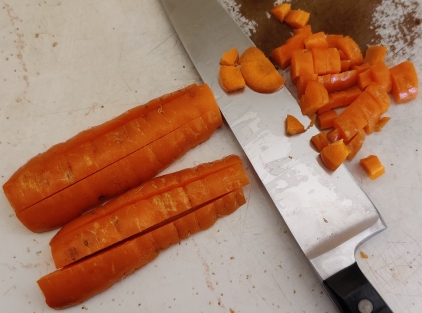
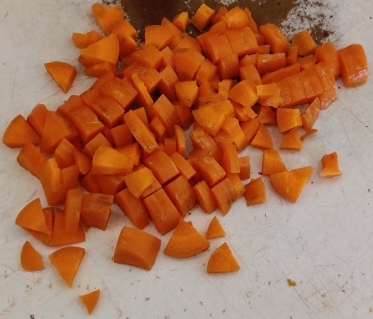
The chopped carrots were transferred to the pot:
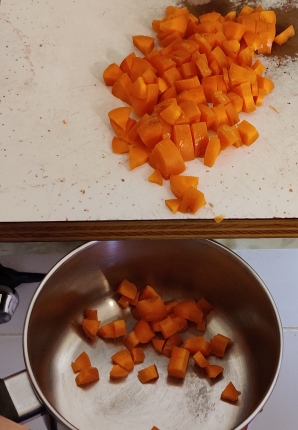
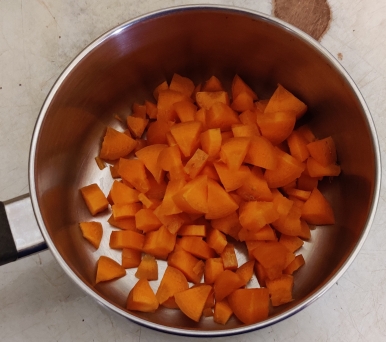
Water was added to the pot of chopped carrots until the carrots were covered:
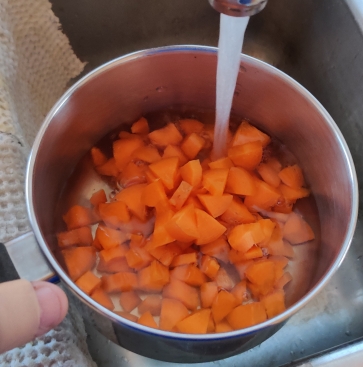
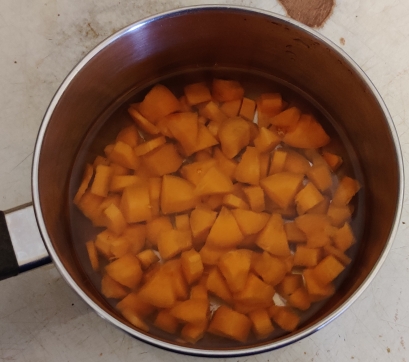
Salt was added to the carrots and water:
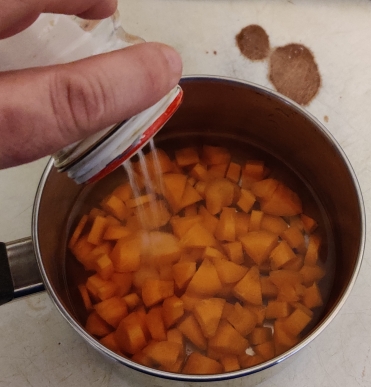
A stove burner was turned on:
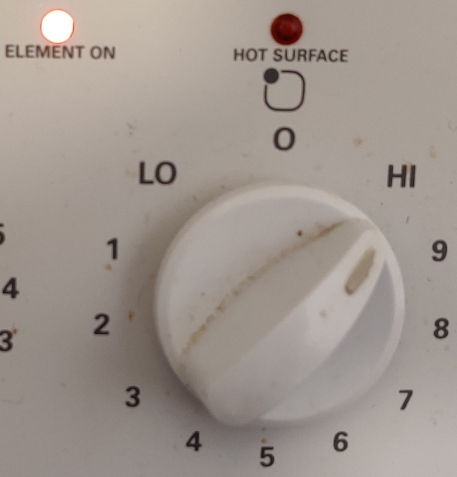
The carrots were brought to a boil …
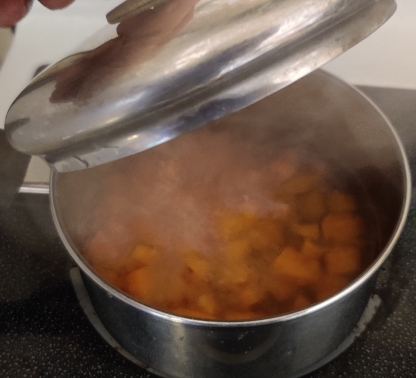
Once the carrots were boiled for about ten minutes, the boiling water was drained off:
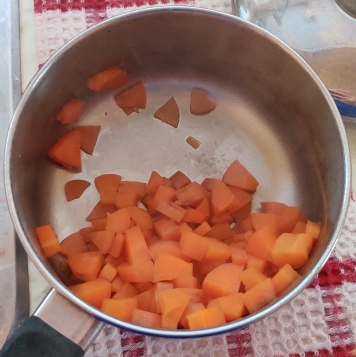
A mixing bowl was taken out in which to transfer the carrots:
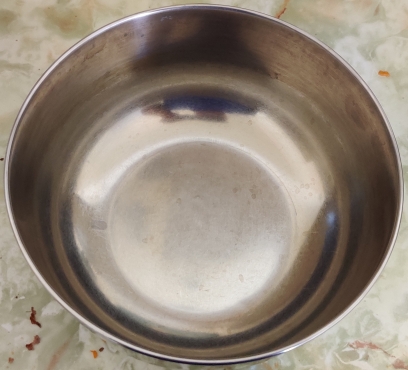
The boiled carrots were transferred to the mixing bowl:
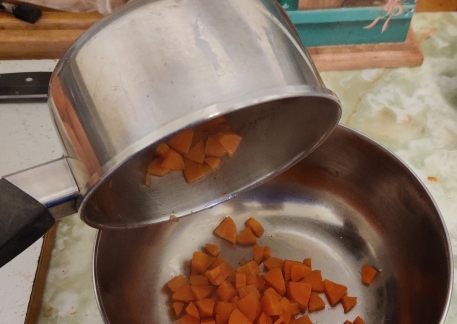
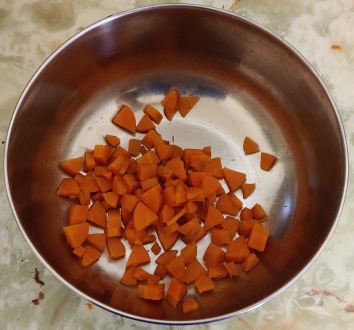
The carrots were put aside for a bit.
A microwave-safe cooking vessel was taken out, ready for a few moments later when the sweet potatoes would be peeled:
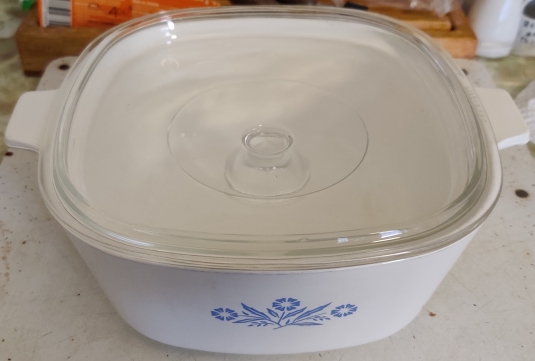
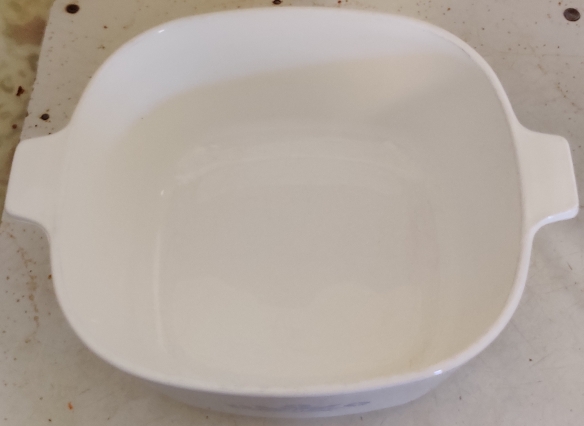
A bowl was placed on the scale, and the scale set to zero:
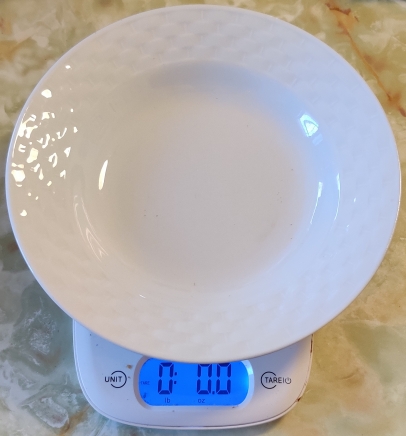
A bit more than four pounds of sweet potatoes were measured out:
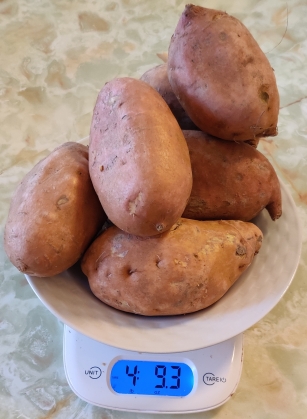
A potato peeler was taken out:

The sweet potatoes were peeled, with the peels placed in a bucket to keep for later disposal in a municipal composting programme:
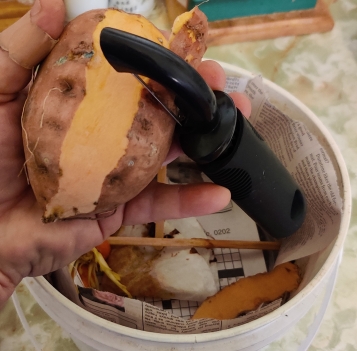
Peeled sweet potatoes were placed in the microwave-safe cooking vessel:
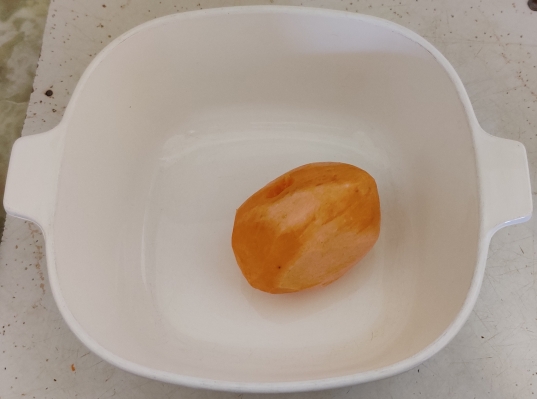
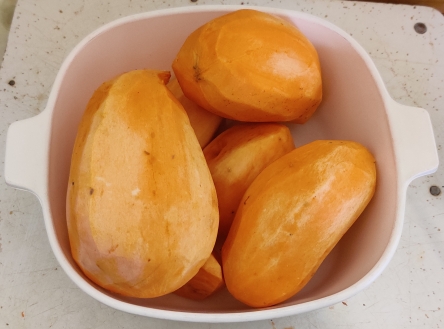
A kitchen knife was taken out:
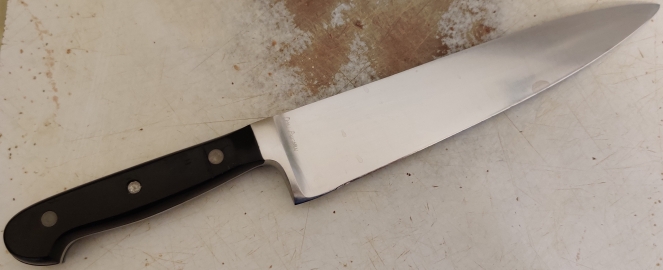
The sweet potatoes were sliced and quartered:
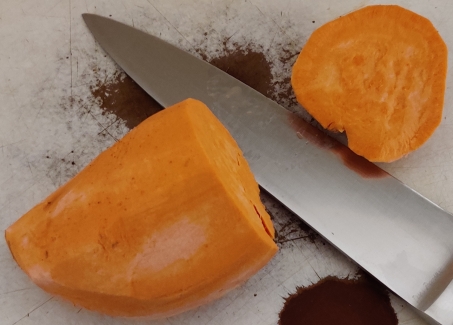
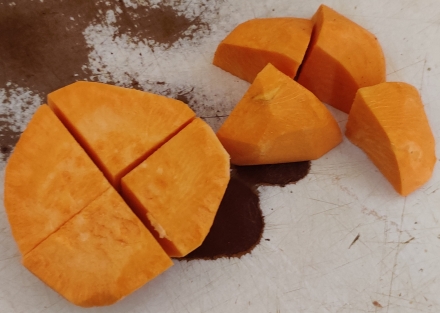
… and placed back in the microwave-safe cooking vessel:
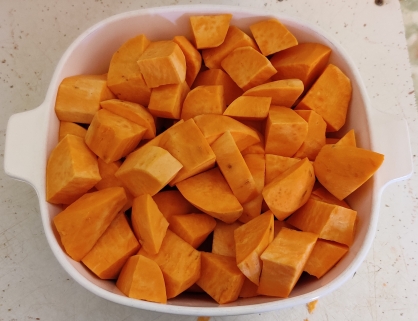
Water was added to the cooking vessel …
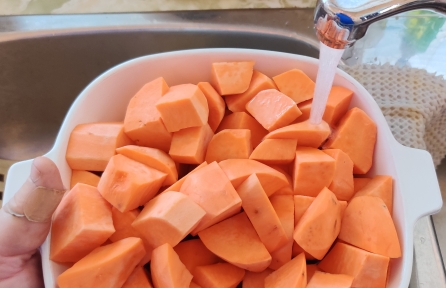
… to about a bit below the surface of the sweet potatoes:
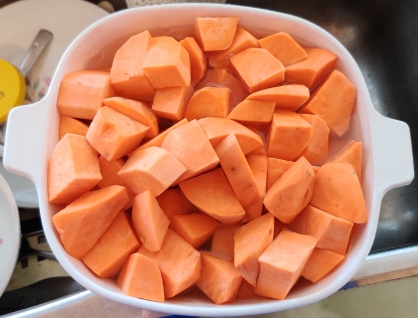
The vessel was covered …
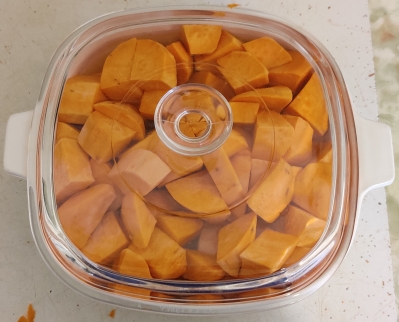
… and placed in the microwave oven:
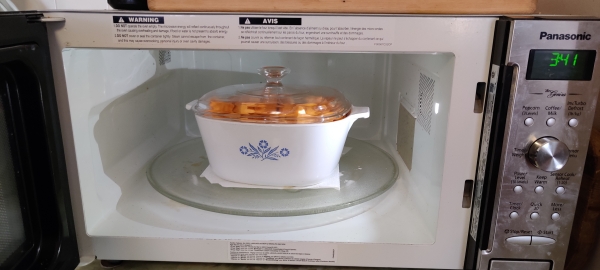
The microwave oven (1200 watts) was set to 18 minutes:
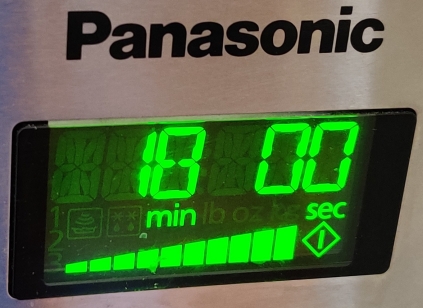
… and the microwave oven was turned on:
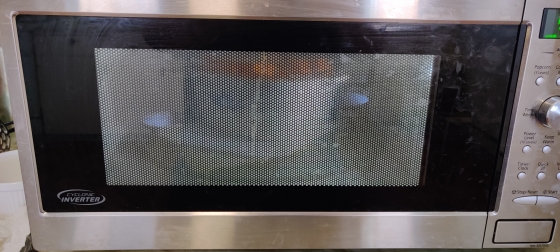
While the sweet potatoes were cooking, a package of dried gravy mix — turkey gravy, which is what I had on hand, and in a package that makes a cup’s worth of gravy, as called for in the recipe, was taken out:
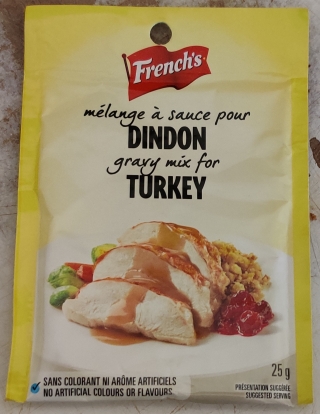
The gravy packet was opened and its contents transferred to another pot that was taken out:
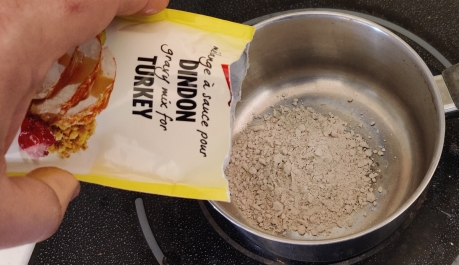
A measuring cup was taken out:

A cup of water was measured out:
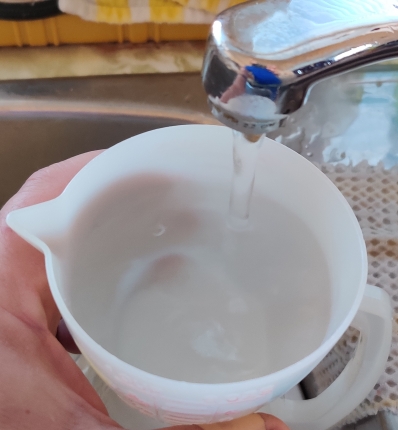
The water was added to the pot:
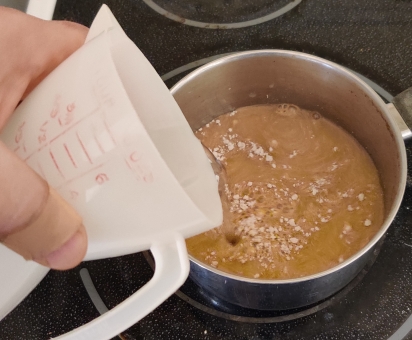
The gravy mix and water were mixed with a spoon:
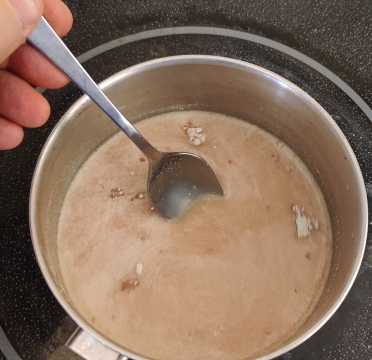
The gravy was put aside, since the time on the roast pork ran out:
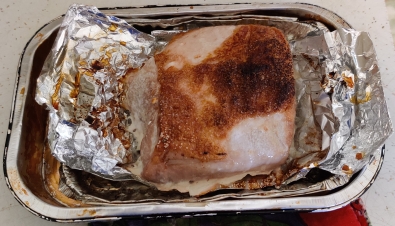
A meat thermometer was taken out …
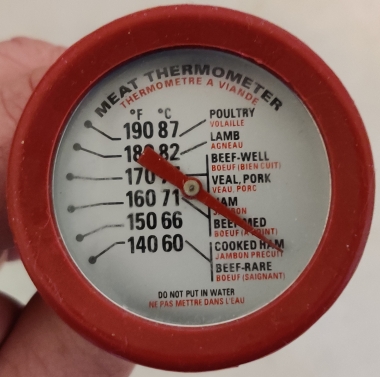
… and stuck into the pork, giving a temperature reading just right for fully cooked pork:
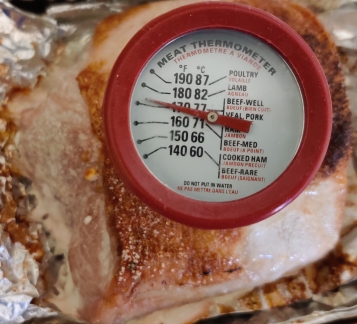
The pork was removed from the roasting pan:
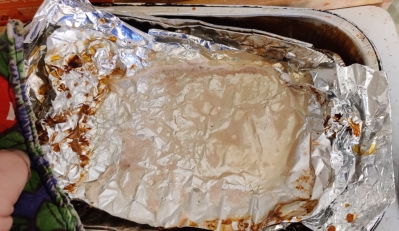
… and the juices in the roasting pan were drained into the bowl with the cooked carrots
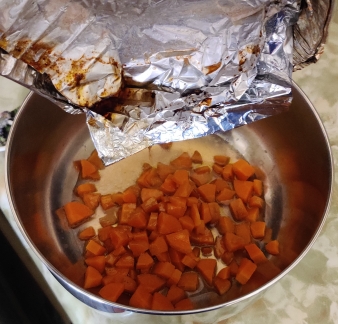
The roast pork was sliced thickly:
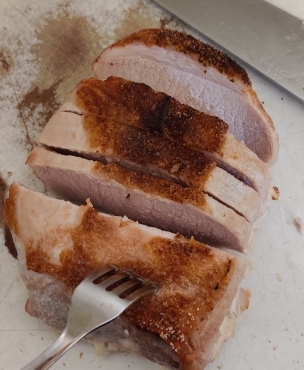
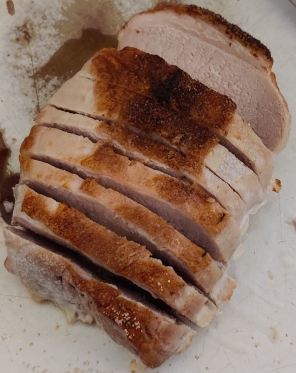
The roast pork was cut into cubes:
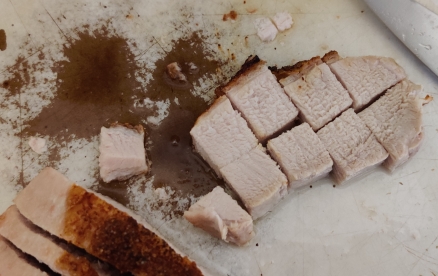
A small blender with chopping blades was taken out …
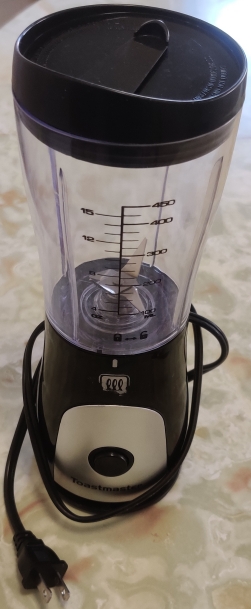
… and the blender was plugged in:

Cubes of roast pork were placed in the blender …
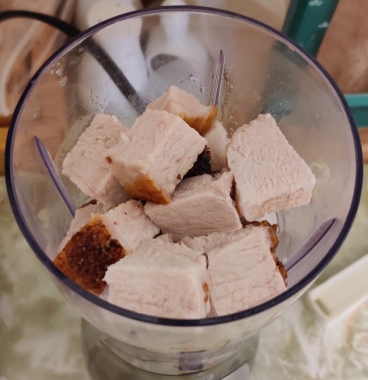
… and the lid placed on top of the blender:
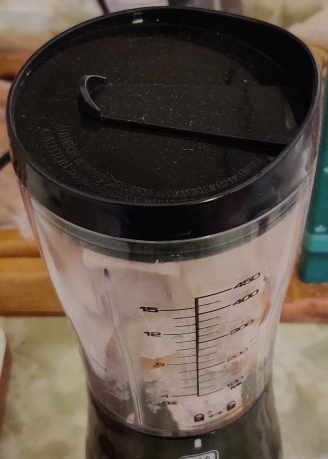
The pork was ground finely without creating a mush:
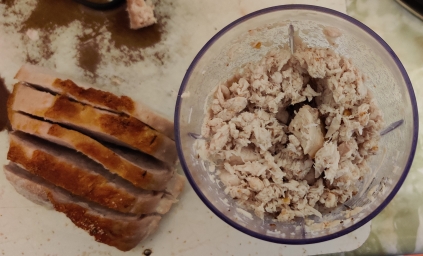
The chopped pork was transferred to the bowl with the cooked carrots and pork juices:
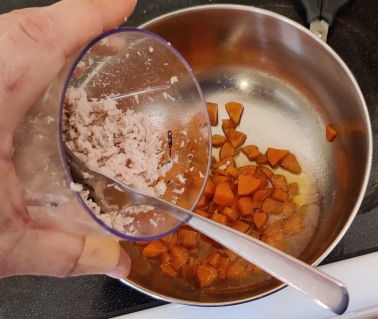
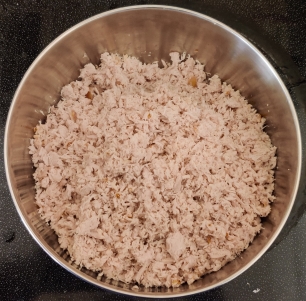
Larger bits of pork which did not get ground finely enough were removed from the bowl, to be ground again with more pork cubes:
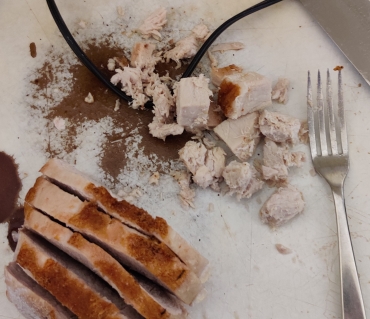
The rest of the pork was ground and transferred to the mixing bowl.
Returning to the gravy, a burner on the stove was turned on, in this case, the smaller inner part of a larger burner which has two settings:
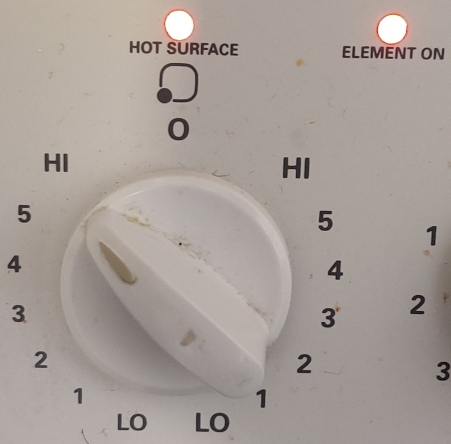
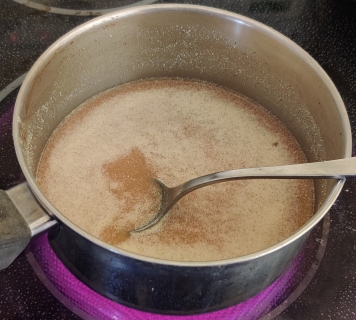
The gravy was constantly mixed while being heated, to avoid burning:
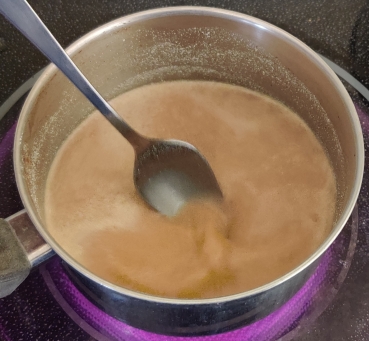
Once the gravy came to a boil, the timer was set to a minute …
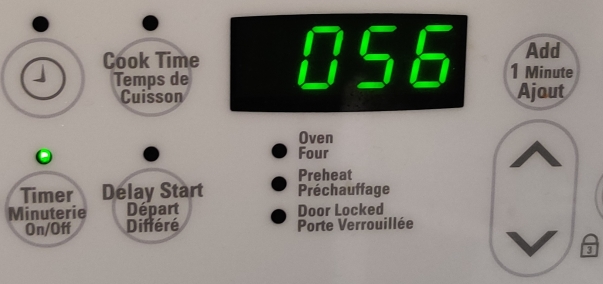
… while the burner setting was reduced to just about minimum to only allow for simmering:
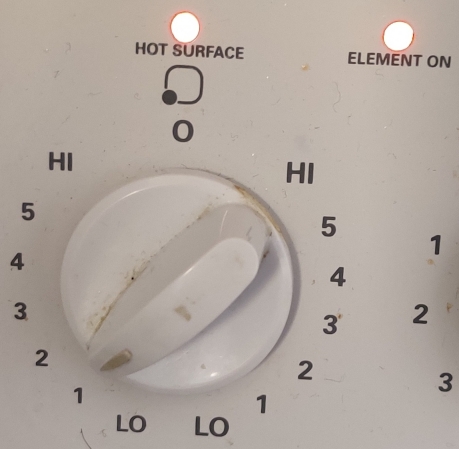
Once the minute ran out, the gravy was poured over the ground pork and carrots:
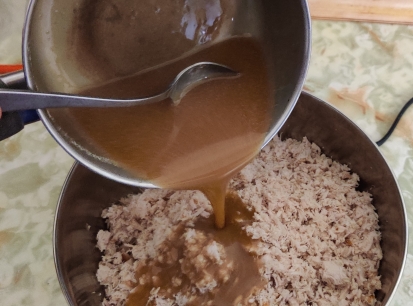
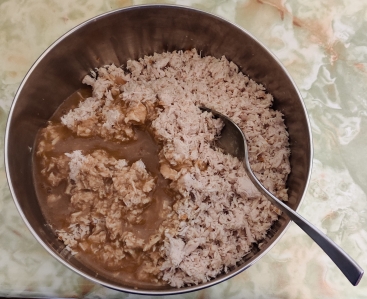
The gravy, ground pork, and carrots were mixed with the spoon:
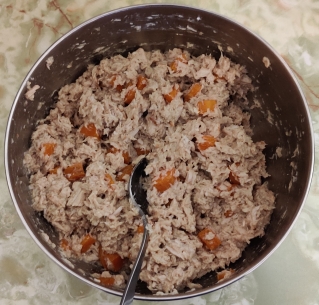
At this point, oven-proof dishes were taken out, for filling:
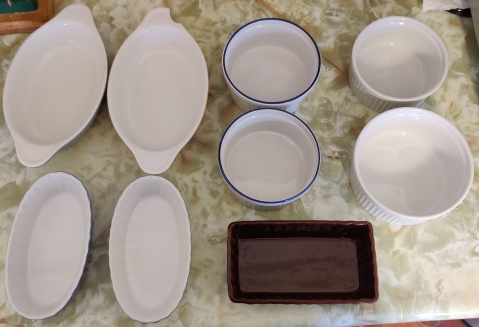
The meat mix was spooned into containers to about half full, and spread out evenly:
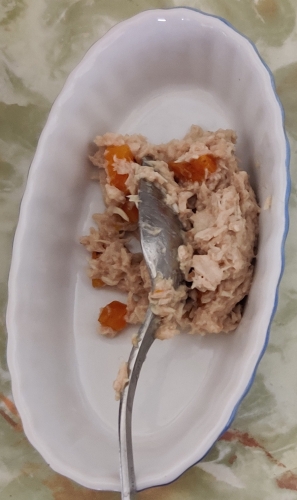
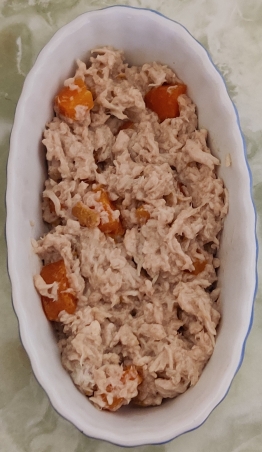
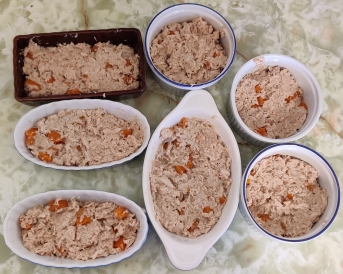
At this point, I came back to the sweet potatoes, which had long since finished cooking in the microwave oven:
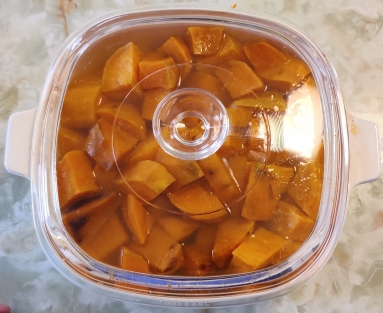
The sweet potatoes were checked with a fork to see if they were properly cooked through, which they were:
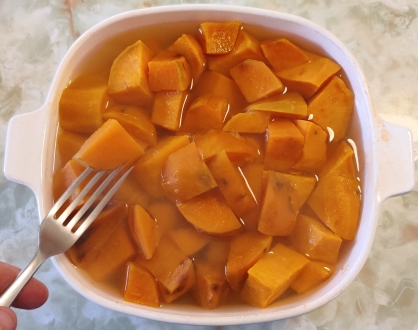
The water was drained off of the sweet potatoes:
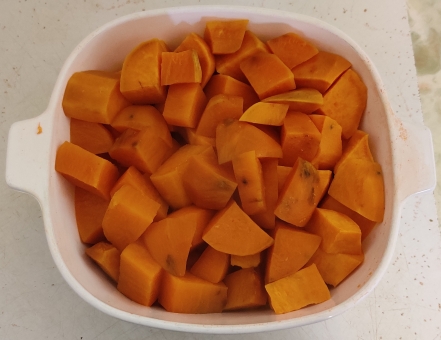
A container of margarine was taken out and opened:
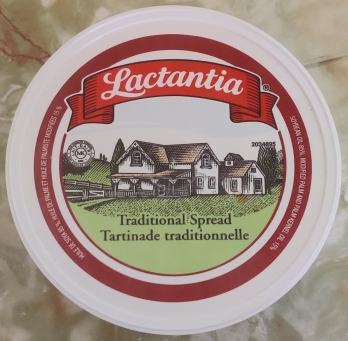
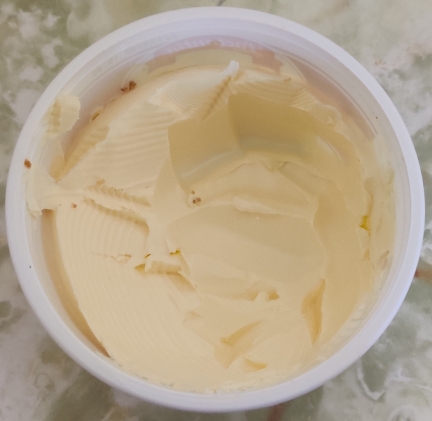
A dollop of margarine was taken from the margarine container with a spoon:
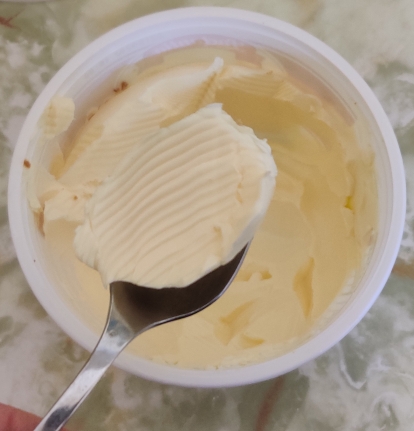
The margarine was added to the sweet potatoes:
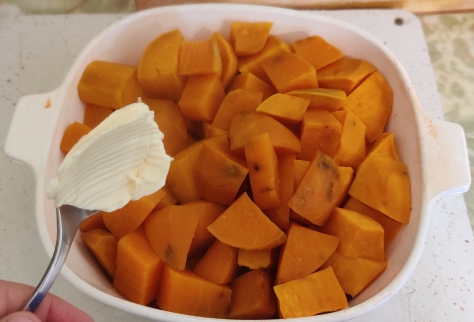
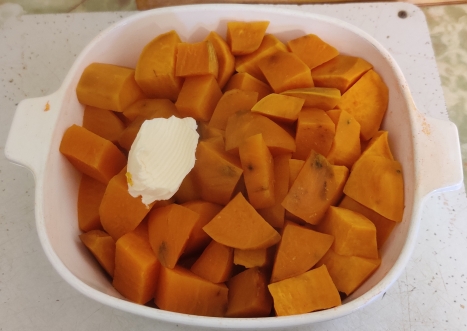
A measuring cup and milk were taken out:
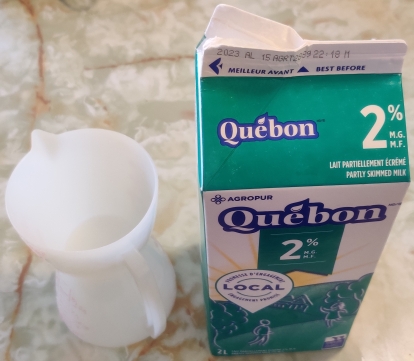
Milk was measured out:
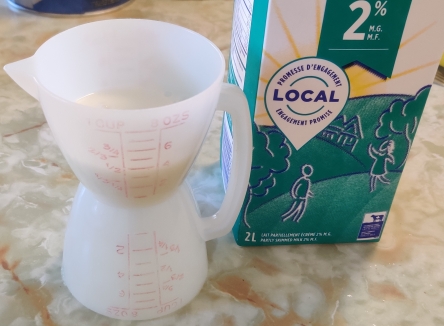
The milk was added to the sweet potatoes and margarine:
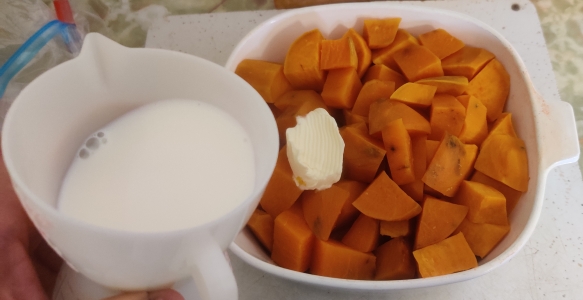
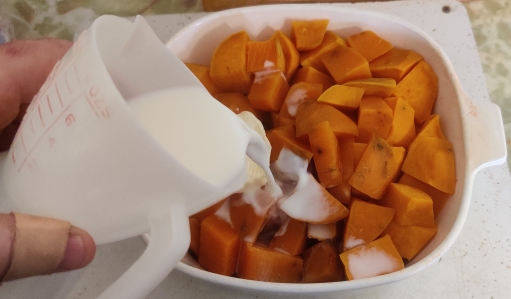
Measuring spoons were taken out:
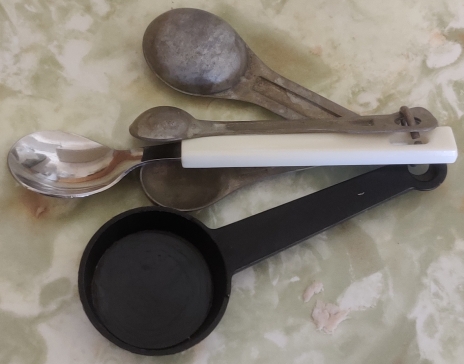
Salt was taken out:
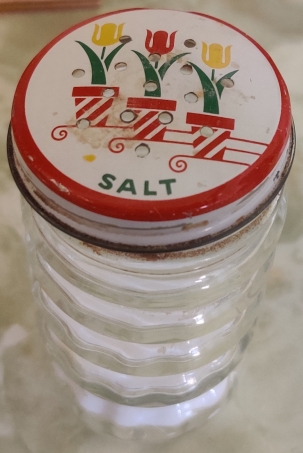
Salt was measured out:
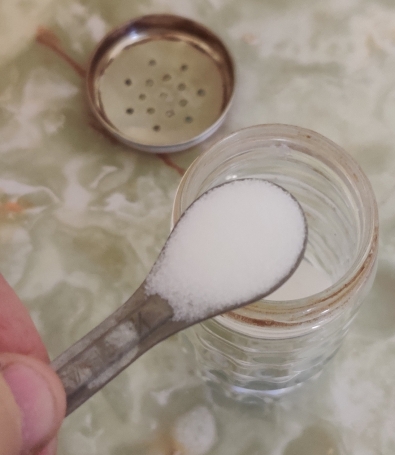
The salt was added to the sweet potatoes:
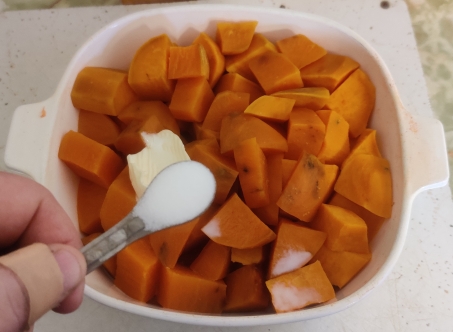
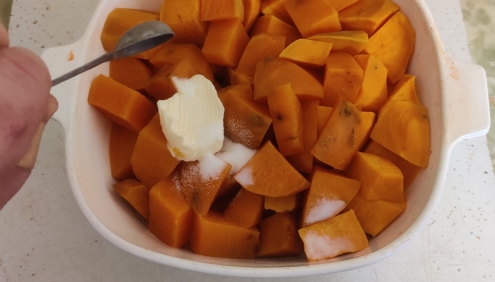
An electric mixer was taken out, to mash the sweet potatoes:
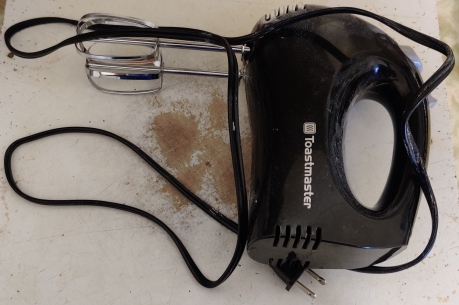
The electric mixer was plugged in:
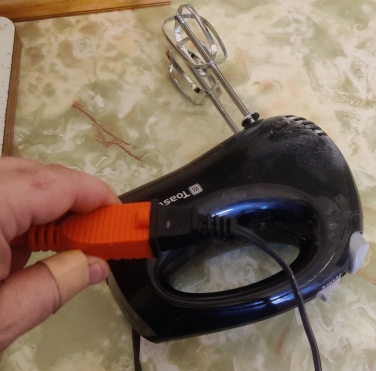
The sweet potatoes were mashed with the electric mixer:
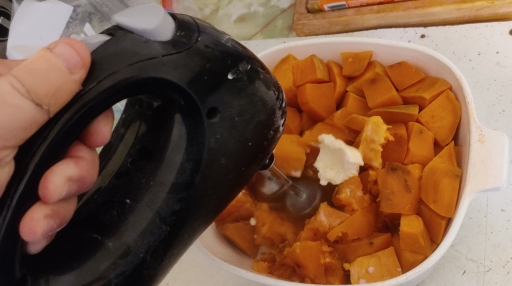
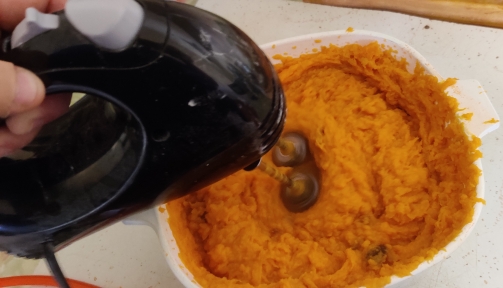
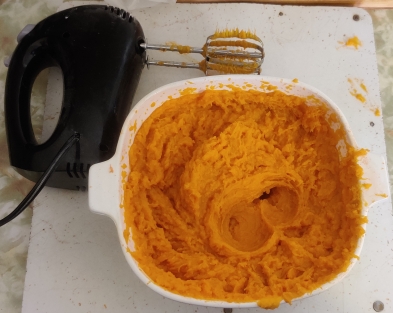
A plastic icing spreader was taken out:
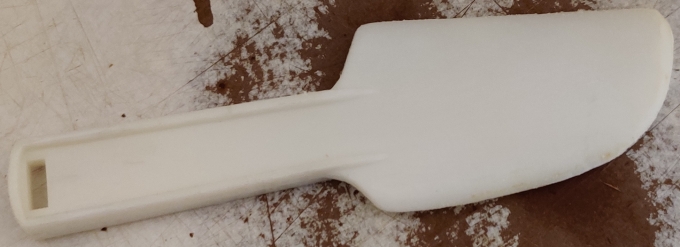
Mashed sweet potatoes were picked up with the icing spreader …
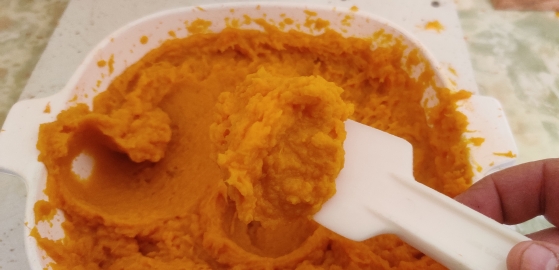
… and, back to the containers with the pork, gravy, and carrots mix, the mashed sweet potatoes were spread on top of the meat mix :
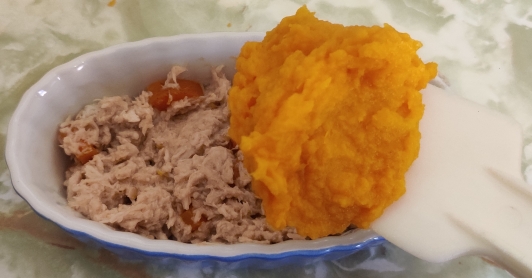
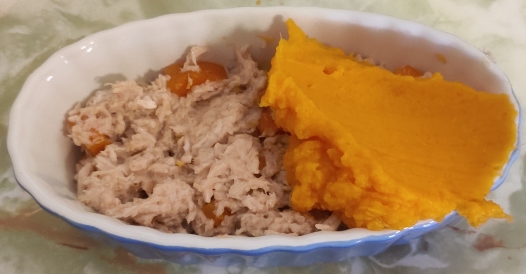
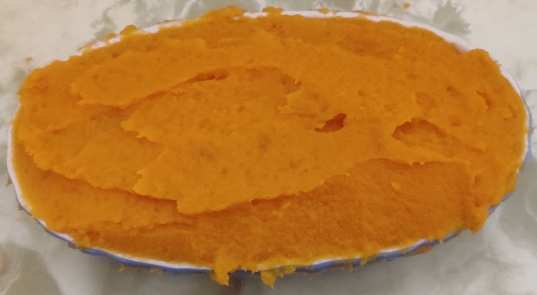
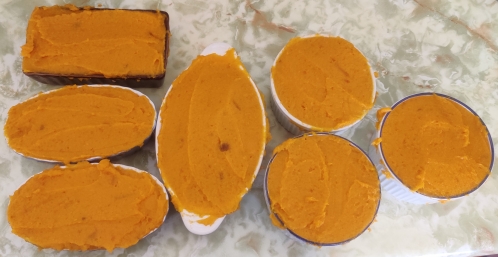
Plastic bags were taken out and identified and dated:
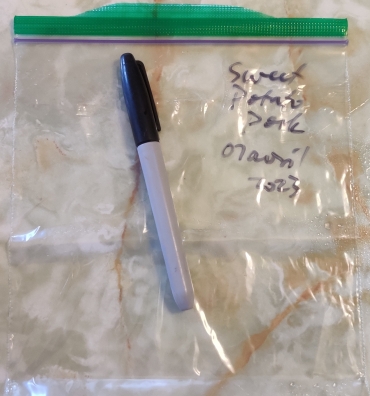
The dishes were placed in the individual bags:
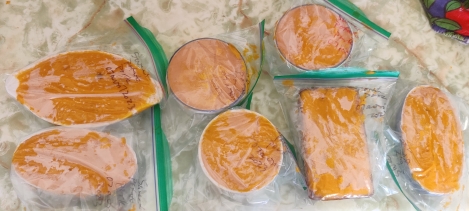
And finally, the bagged dishes were placed in the freezer:
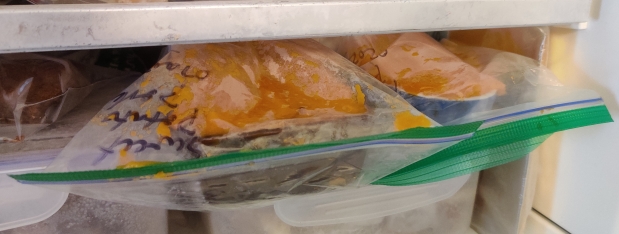
This tasty dish is now a favourite!
